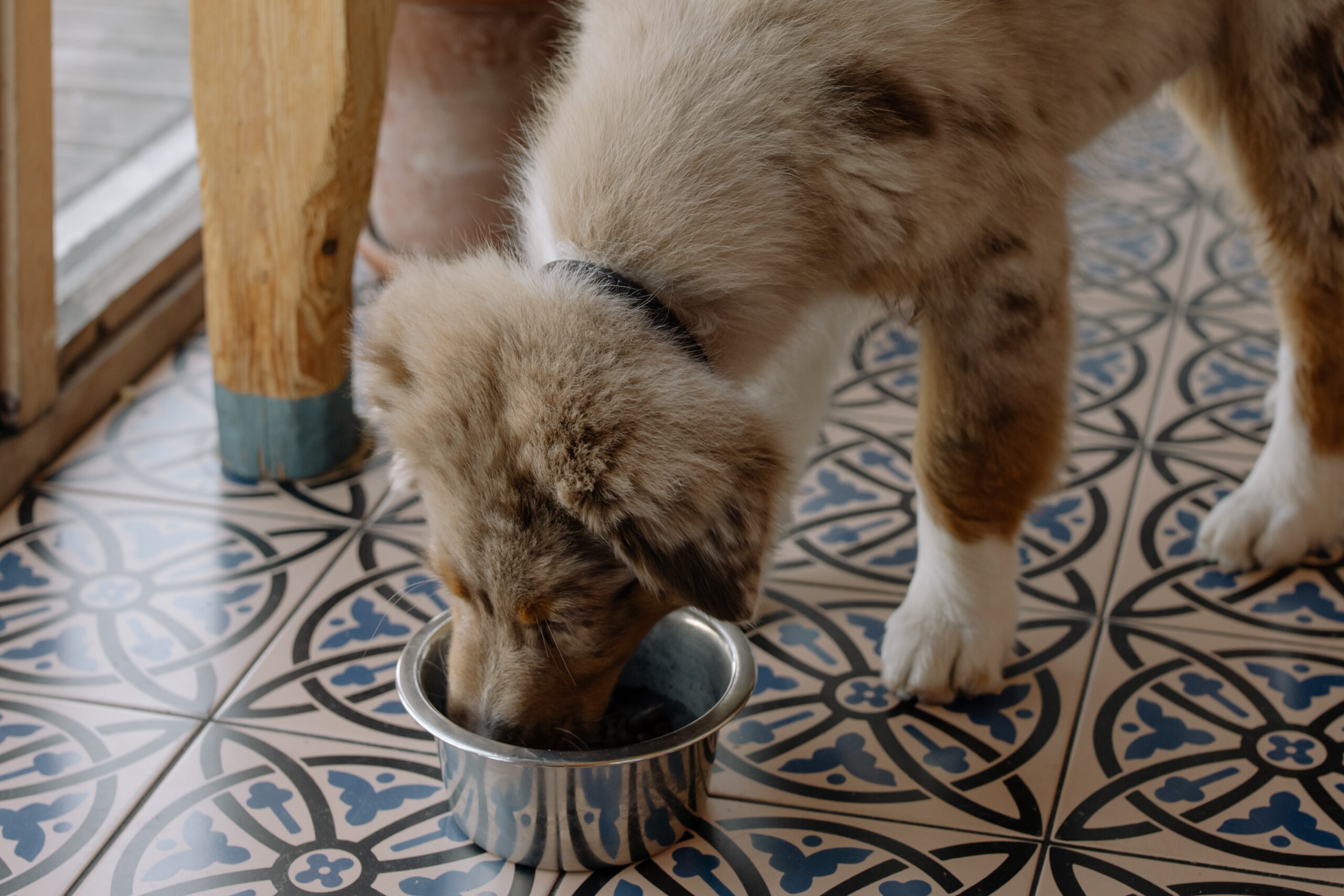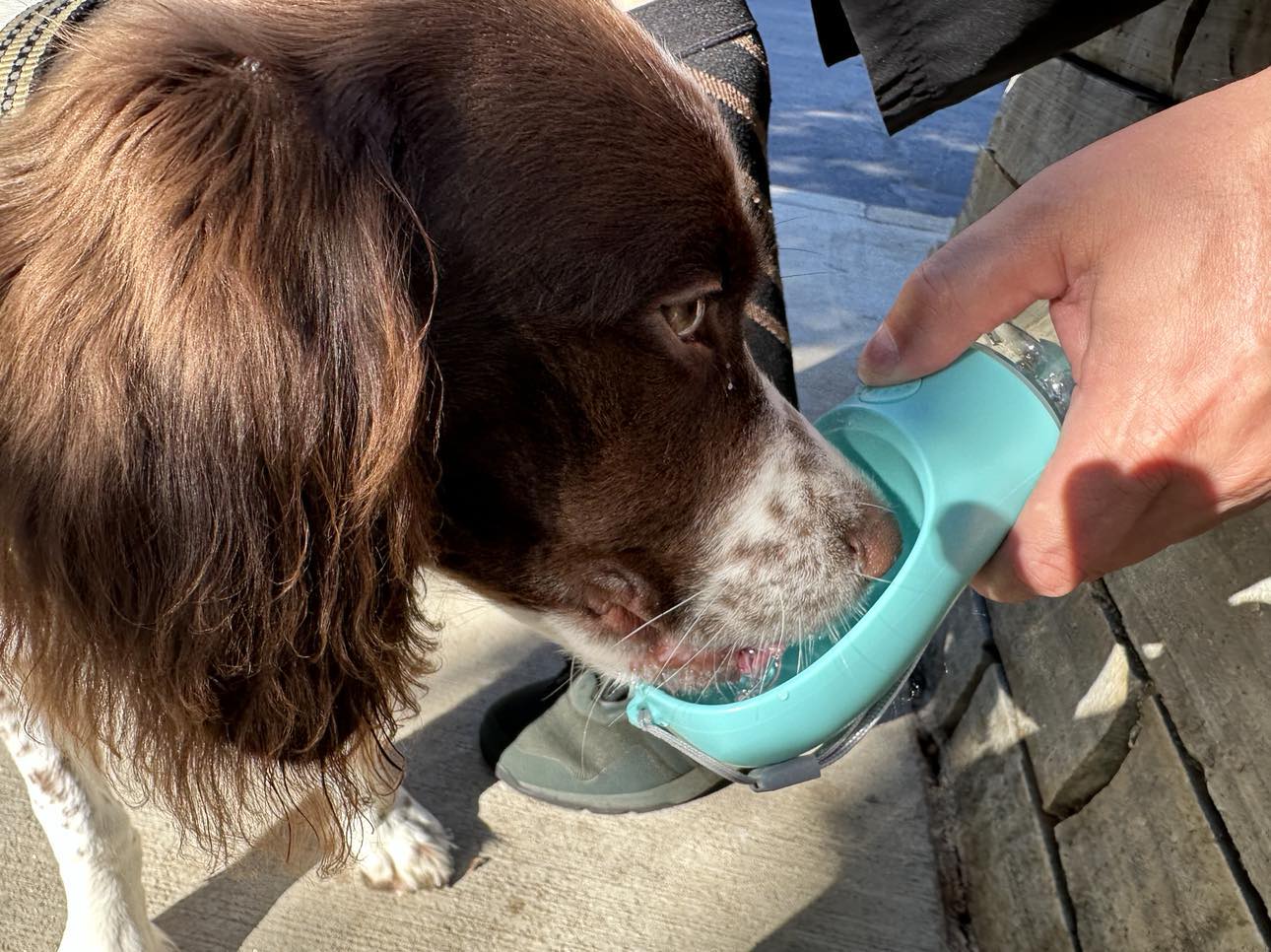Dog crates serve various purposes and offer numerous benefits for both dogs and their owners. We will explore the primary reasons why dog crates are used and the advantages they provide. From aiding in house training to providing a safe and secure space for dogs, crates play a valuable role in their well-being and development.
There are several misconceptions surrounding crate training that can lead to hesitation or resistance in using crates. We will address these misconceptions and provide accurate information to debunk common myths. By understanding the truth about crate training, dog owners can make informed decisions and fully appreciate the benefits that crates can offer.
Choosing the Right Crate
Types of Dog Crates: Wire Crates, Plastic Crates, Soft-Sided Crates, and More
When it comes to dog crates, there are various options available, each with its own set of features and advantages. Let’s take a closer look at some of the popular types of dog crates to help you make an informed decision:
- Wire Crates: Wire crates are a popular choice due to their durability and excellent ventilation. They typically consist of a metal frame with removable metal bars, allowing for good airflow and visibility. Wire crates often come with a removable tray for easy cleaning and can be folded for convenient storage or transportation.
- Plastic Crates: Plastic crates are known for their sturdy construction and portability. They are often made from durable molded plastic and have a solid, enclosed design that provides a cozy den-like environment for dogs. Plastic crates usually have a secure door and ventilation panels to ensure proper airflow.
- Soft-Sided Crates: Soft-sided crates are lightweight, portable, and easy to set up. They are made from fabric materials such as nylon and mesh, with a flexible frame that can be folded for storage. Soft-sided crates are ideal for travel or temporary use and provide a comfortable and secure space for your dog.
- Heavy-Duty Crates: For larger or more energetic dogs, heavy-duty crates are a great option. These crates are made with extra-strong materials such as reinforced steel or aluminum, ensuring that even the strongest of dogs cannot escape. Heavy-duty crates are often used for training purposes or to contain dogs with destructive tendencies.
- Decorative Crates: If you prefer a crate that blends seamlessly with your home decor, decorative crates are worth considering. These crates are designed to resemble furniture, such as end tables or wooden crates with stylish finishes. They provide a functional and aesthetically pleasing crate solution for your dog while adding to the overall ambiance of your living space.
When choosing a dog crate, consider factors such as the size and breed of your dog, the intended purpose of the crate (e.g., training, travel, or daily use), and your personal preferences. It’s important to select a crate that provides sufficient space, proper ventilation, and security for your furry friend.
Considerations for Selecting the Appropriate Size and Style of Crate for Your Dog
Selecting the right size and style of crate is essential to ensure the comfort and well-being of your dog. Here are some important considerations to keep in mind:
- Size: The crate should be spacious enough for your dog to stand up, turn around, and lie down comfortably. Measure your dog’s height, length, and width to determine the appropriate crate size. It’s better to choose a crate that allows for some extra room rather than one that is too small and restrictive.
- Breed and Growth Potential: Take into account the size and growth potential of your dog’s breed. If you have a puppy, consider how large they will grow to avoid the need for frequent crate replacements. Look for crates with divider panels that can be adjusted as your puppy grows, allowing you to create a smaller space initially and expand it gradually.
- Temperament and Comfort: Consider your dog’s temperament and comfort preferences. Some dogs may feel more secure in enclosed plastic crates, while others may prefer the openness and visibility of wire crates. Soft-sided crates can be a cozy option for dogs who enjoy a more den-like environment. Observing your dog’s behavior and preferences can help guide your decision.
- Portability and Storage: If you plan to travel with your dog or need to move the crate around frequently, consider the portability and collapsibility of the crate. Soft-sided or foldable crates are lightweight and easy to transport, while wire or plastic crates with handles or wheels offer convenience for on-the-go pet owners.
- Safety Features: Look for crates with secure latches or locks to prevent accidental escape. The crate should also have proper ventilation to ensure adequate airflow. Avoid crates with sharp edges or protrusions that could cause injury to your dog.
Remember to introduce the crate gradually and make it a positive experience for your dog. You can use treats, toys, and positive reinforcement to associate the crate with pleasant feelings. Regularly assess your dog’s comfort and adjust the crate size if necessary, especially for growing puppies. By selecting the appropriate size and style of crate, you can provide your dog with a comfortable and secure space they can call their own.
Exploring Additional Features and Accessories for Crate Comfort and Safety
To enhance your dog’s crate experience, there are various features and accessories to consider. We will discuss options such as crate mats, bedding, and crate covers that can provide added comfort and security. Additionally, we will highlight safety considerations such as sturdy latches, ventilation, and proper placement of the crate within your home.
Crate Training Basics
Introducing Your Dog to the Crate in a Positive and Gradual Manner
The proper introduction to the crate is crucial for successful crate training. Techniques that can help your dog associate the crate with positive experiences and create a sense of comfort and security include:
- Positive Association: Use treats, toys, and praise to encourage your dog to voluntarily enter the crate. Place treats near the crate and gradually move them inside to motivate your dog to explore the space.
- Gradual Approach: Introduce the crate gradually, allowing your dog to explore and enter the crate at their own pace. Avoid forcing your dog into the crate or closing the door initially. Let them enter and exit freely, associating the crate with positive experiences.
- Mealtime in the Crate: Use mealtime as an opportunity to create a positive association with the crate. Place your dog’s food bowl near the crate, gradually moving it inside until your dog is comfortable eating their meals inside the crate.
Establishing a Routine and Using Positive Reinforcement Techniques During Crate Training
Consistency and positive reinforcement are essential for successful crate training. Here are key strategies to consider:
- Consistent Schedule: Establish a routine for crate time, including scheduled meals, potty breaks, and designated quiet periods. Consistency helps your dog anticipate crate time and reduces anxiety associated with uncertainty.
- Rewards and Encouragement: Use treats, toys, and verbal praise to reward and reinforce desired behaviors associated with the crate. Provide rewards when your dog enters the crate willingly or displays calm behavior inside the crate.
- Gradual Increases in Crate Time: Start with short periods of crate confinement and gradually increase the duration. This helps your dog build confidence and comfort in the crate. Gradually extend the time your dog spends in the crate, rewarding them for remaining calm and relaxed.
Addressing Potential Challenges and Troubleshooting Crate Training Issues
Crate training may present challenges that require troubleshooting. Here are some common issues and strategies to address them:
- Whining or Barking: If your dog whines or barks in the crate, avoid giving in to their demands. Wait for a moment of quiet before opening the crate door. Reward your dog for calm behavior and gradually increase the duration of quiet before opening the crate.
- Separation Anxiety: For dogs with separation anxiety, crate training can be a valuable tool. Start with short periods of separation, gradually increasing the time apart. Use calming techniques, such as leaving a piece of clothing with your scent in the crate, to provide comfort.
- Gradual Adaptation: If your dog shows reluctance or fear towards the crate, go back a step in the training process. Reinforce positive associations by reintroducing treats and rewards. Gradually rebuild trust and confidence by taking small, positive steps.
By introducing the crate gradually and using positive reinforcement techniques, you can help your dog develop a positive association with the crate and make crate training a positive experience for both of you. Patience, consistency, and understanding your dog’s individual needs are key to successful crate training.
Creating a Positive Crate Environment
Making the Crate Comfortable and Inviting for Your Dog
One of the keys to successful crate training is creating a comfortable and inviting environment for your dog. Consider the following tips:
- Selecting Appropriate Bedding: Choose soft blankets or crate pads that provide cushioning and insulation. Ensure that the bedding is suitable for your dog’s size and breed, offering them a cozy place to rest.
- Positioning the Crate: Place the crate in a quiet and secure area of your home, away from excessive noise or distractions. This helps create a sense of safety and relaxation for your dog. Avoid placing the crate in isolated areas where your dog may feel isolated or excluded.
Using Bedding, Toys, and Treats to Create a Positive Association with the Crate
To make the crate a positive space for your dog, consider incorporating familiar and enjoyable items:
- Favorite Toys: Place a few of your dog’s favorite toys inside the crate to provide comfort and entertainment. These toys can help keep your dog occupied and make crate time more enjoyable.
- Chew Treats and Puzzle Toys: Introduce special chew treats or puzzle toys that your dog can enjoy exclusively in the crate. This creates a positive association with the crate and provides mental stimulation during crate time.
Ensuring Proper Ventilation, Temperature, and Cleanliness Within the Crate
Maintaining a clean, well-ventilated, and comfortable crate is essential for your dog’s well-being:
- Regular Cleaning: Clean the crate regularly to prevent odors and maintain hygiene. Remove any waste or soiled bedding promptly and wipe down the crate with pet-safe cleaning products.
- Ventilation and Temperature: Ensure that the crate has proper ventilation to allow for fresh airflow. Avoid placing the crate in direct sunlight or drafts. Additionally, monitor the temperature within the crate to ensure it remains comfortable for your dog, especially during hot or cold weather.
By creating a comfortable and inviting crate environment, you help your dog associate the crate with positive experiences. With the right bedding, toys, and treats, you can make the crate a place of comfort and enjoyment for your dog. Furthermore, ensuring cleanliness, proper ventilation, and suitable temperature conditions contribute to your dog’s overall well-being and make crate time a positive and pleasant experience.
Proper Use of Crates
Understanding Appropriate Crate Duration and Frequency Based on Your Dog’s Age and Needs
To ensure the well-being of your dog, it is important to consider the appropriate duration and frequency of crate usage based on their age and individual needs. Consider the following guidelines:
- Age Considerations: Young puppies have limited bladder control and may need to be let out more frequently. As they mature, they can gradually tolerate longer periods in the crate. Consult your veterinarian or a professional trainer for age-specific recommendations.
- Bladder Control: Dogs vary in their ability to hold their bladder for extended periods. Puppies typically have a shorter bladder capacity and require more frequent bathroom breaks. Adult dogs can generally hold it for longer, but it is important to provide regular opportunities for them to relieve themselves.
Utilizing the Crate for House Training and Preventing Destructive Behaviors
Crate training can be a valuable tool for house training and preventing destructive behaviors. Consider the following:
- House Training: Crating can aid in house training by teaching your dog to control their bladder and bowels. The crate becomes a designated “den” where your dog learns to hold it until they are taken outside. Gradually increase the time spent in the crate between bathroom breaks as your dog develops better bladder control.
- Preventing Destructive Behaviors: Crating can keep your dog safe and prevent them from engaging in destructive behaviors when unsupervised. By providing a secure and confined space, you can minimize the chances of your dog damaging furniture, chewing on belongings, or getting into potentially dangerous situations.
Recognizing Signs of Stress or Discomfort and Adjusting Crate Usage Accordingly
It is essential to pay attention to your dog’s behavior and well-being while they are in the crate. Look for signs of stress or discomfort, such as excessive whining, pacing, or attempting to escape. If you observe these signs, consider the following steps:
- Reevaluate Duration: If your dog is showing signs of distress, reduce the duration of crate time and gradually increase it as they become more comfortable.
- Provide Support and Training: Offer reassurance and positive reinforcement when your dog is in the crate. Use treats, praise, and interactive toys to create a positive association. Additionally, engage in crate training exercises to help your dog feel more at ease.
- Seek Professional Guidance: If your dog consistently exhibits signs of stress or discomfort despite your efforts, consult a professional dog trainer or behaviorist for guidance and additional strategies.
By understanding and adhering to appropriate crate usage, you can effectively support your dog’s training and well-being. Consider their age, bladder control, and individual needs when determining crate duration and frequency. Use the crate as a tool for house training and to prevent destructive behaviors, always ensuring your dog’s comfort and happiness.
Traveling and Crates
Using Crates for Safe and Secure Transportation of Dogs
When it comes to traveling with your dog, crates offer a reliable and secure method of transportation. Crates provide containment, which helps ensure the safety of your dog and reduces distractions for the driver. By using crates, you can minimize the risk of injuries and create a controlled environment during car rides, airplane trips, and other modes of travel.
Exploring Crate Options for Different Modes of Travel (Car, Airplane, etc.)
Different modes of travel have specific requirements for dog crates. Consider the following options:
- Car Travel: Look for car-specific crates or harnesses that can be secured in your vehicle, providing stability and preventing your dog from moving around. This ensures both their safety and the safety of other passengers.
- Air Travel: Airlines have specific regulations for crates used during flights. Research the guidelines and invest in an airline-approved crate that meets the necessary size, ventilation, and security requirements. This ensures compliance and a comfortable travel experience for your dog.
Tips for Acclimating Your Dog to Crate Travel and Ensuring a Stress-Free Experience
To make crate travel a positive experience for your dog, consider the following tips:
- Crate Training: Gradually introduce your dog to the crate and associate it with positive experiences. Use treats, toys, and positive reinforcement to create a positive association with the crate.
- Gradual Exposure: Start with short practice trips and gradually increase the duration. This helps your dog become accustomed to crate travel and reduces any potential stress or anxiety.
- Familiar Comforts: Place familiar items such as their favorite blanket or toy inside the crate to provide comfort and reassurance during travel.
By using crates for traveling, you can ensure the safety and well-being of your dog. Explore the different crate options available for car and air travel, adhering to specific guidelines and regulations. Acclimate your dog to crate travel through training and gradual exposure, incorporating familiar comforts to create a stress-free experience. With proper preparation and consideration, traveling with your dog can be a smooth and enjoyable journey for both of you.
Alternatives to Crates
Considering Alternative Confinement Methods Such as Playpens or Gated Areas
When crates may not be the ideal option, it’s important to explore alternative confinement methods that can provide a safe and secure space for your dog. Playpens or gated areas are alternatives that allow your dog to have more freedom of movement while still being contained and supervised. These options create an enclosed space where your dog can stretch their legs and engage in light activity without the constraints of a crate.
B. Exploring the Use of Dog-Proofed Rooms for Supervised Freedom
For well-behaved and reliable dogs, dog-proofed rooms offer another alternative to crates. By removing potential hazards and securing valuable or fragile items, you can create a designated area where your dog can move around and have more space while still maintaining boundaries. Dog-proofed rooms provide supervised freedom and allow your dog to have a sense of independence while under your watchful eye.
C. Understanding the Limitations and Potential Benefits of Crate Alternatives
It’s important to recognize the limitations and potential benefits of crate alternatives. Factors such as your dog’s size, activity level, training, behavior, and your home environment should be considered. Crate alternatives offer more freedom, but they may not be suitable for all dogs or situations. Understanding the pros and cons of each alternative helps you make an informed decision that meets your dog’s specific needs and circumstances.
Exploring alternatives to crates provides flexibility in confinement options for your dog. Playpens or gated areas, as well as dog-proofed rooms, offer supervised freedom and a secure environment. By considering the specific needs and characteristics of your dog, you can determine the most suitable alternative confinement method that strikes the right balance between freedom and supervision.
Addressing Concerns and Controversies
Addressing Common Concerns and Criticisms Surrounding Crate Training
Crate training has faced criticisms and concerns that need to be addressed. In this section, we will debunk common misconceptions surrounding crate training, such as the belief that it is cruel or inhumane. By providing evidence-based explanations, we can clarify the benefits of crate training when implemented correctly and responsibly.
Exploring the Ethical Considerations and Ensuring the Well-Being of Dogs in Crates
Ethical considerations are paramount in crate training. To ensure the well-being of dogs in crates, we will discuss key factors such as crate size, duration of confinement, and the provision of mental and physical stimulation. By exploring strategies to create a positive experience for dogs in crates, we can underscore the importance of responsible ownership and the need to monitor the welfare of our beloved canine companions.
Seeking Professional Advice and Guidance for Specific Concerns or Special Cases
Each dog is unique, and some may have specific concerns or special needs related to crate training. Seeking professional advice and guidance from trainers, veterinarians, or animal behaviorists is crucial in such cases. These experts can provide tailored recommendations, address specific concerns, and offer support to individuals facing challenges or unique circumstances in crate training.
By addressing concerns and controversies, exploring ethical considerations, and emphasizing the importance of seeking professional guidance, we strive to present a well-rounded perspective on crate training. It is essential to approach crate training with careful thought, responsible practices, and a focus on the well-being of our dogs. By doing so, we can ensure that crate training serves as a beneficial and humane tool, promoting safety, comfort, and positive behavior for our furry companions.
Conclusion
In this article, we have explored the purpose and benefits of using dog crates as well as addressed common misconceptions. We discussed choosing the right crate, crate training basics, creating a positive crate environment, proper crate usage, traveling with crates, alternatives to crates, and addressing concerns and controversies.
We encourage dog owners to consider crate training as a valuable tool for various purposes such as house training, preventing destructive behaviors, providing a safe space, and facilitating travel. When used responsibly and with care, crates can contribute to a well-adjusted and balanced canine companion.
It is crucial to approach crate training with responsibility and compassion. We should always prioritize our dogs’ well-being, ensuring they have a comfortable and inviting crate environment and using positive reinforcement techniques. Regular assessment of their comfort, addressing any concerns or stress, and seeking professional guidance when needed are integral parts of responsible crate usage.
By understanding the benefits, considerations, and responsible use of dog crates, we can provide our dogs with a safe and secure space that promotes their well-being and enhances our relationship with them. Remember, crate training is just one tool among many, and each dog is unique, so it’s essential to tailor the approach to suit their individual needs and preferences.










